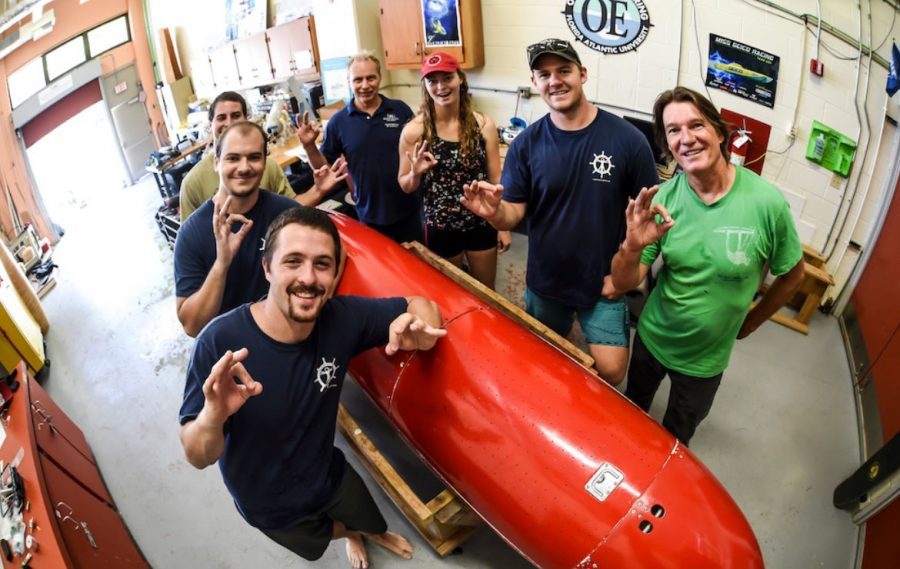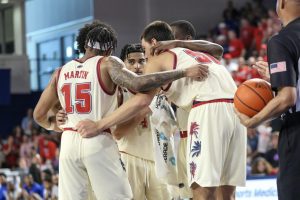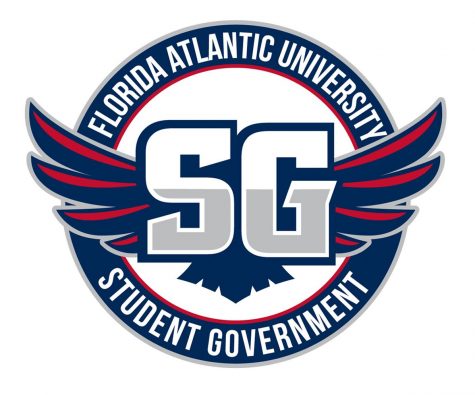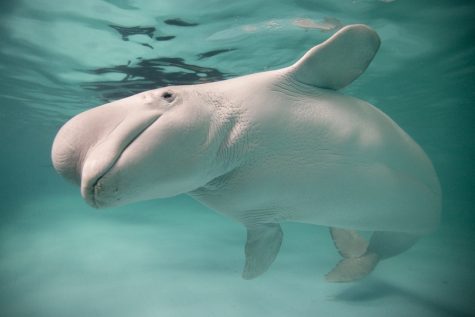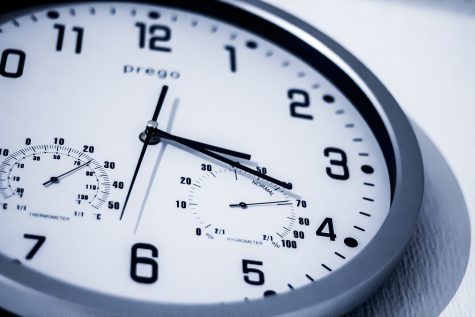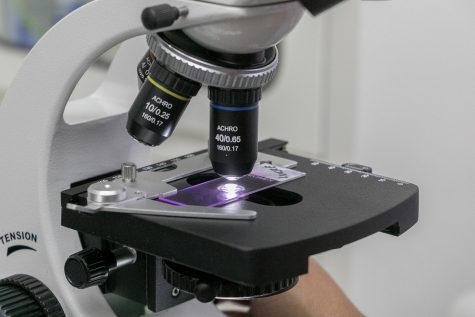Club Spotlight: Human Powered Submarine Club
The decades-old organization builds and races single-person manual submarines internationally.
The Human Powered Submarine Club stands with their submarine in their workshop. Photo courtesy of the FAU News Desk
February 1, 2018
Welcome to the University Press’ revamped weekly club feature series, spotlighting lesser known student organizations on campus.
This week: the Human Powered Submarine Club.
The UP spoke with club President Michael Denny and Vice President Declan Depietro. Competing twice annually, the HPSC has won multiple competitions across the globe.
UP: For those who may not know, what is a human powered submarine?
Denny: It’s a sub made of fiberglass on the hull, filled with water for safety reasons, as you don’t want it to be pressurized, because if you crash it, it becomes a lot more dangerous. The Navy, who has hosted the competition in Maryland since FAU passed it to them, really wants to keep it safe, and see what people can do on a budget.
It’s filled with water, and the pilot breathes off scuba. The traditional way is to have a rotary gearbox and pedal it like a bicycle. We have a linear gearbox, which means instead of doing a circular motion, you just push it back and forth.
Your first time in there is a little nervous, but you get used to it. And you’re surrounded by people there to keep you safe in case you freak out, and we have plenty of people who don’t pilot.
Depietro: The people who pilot are typically people who are comfortable scuba diving and being in tight spaces.
UP: What can you tell us about the Human Powered Submarine Club?
Denny: Well, it’s pretty much everything in the name. We design, build, and race human powered submarines. It’s an engineering club, but we take all. There’s a lot of aspects to the club — getting the money, getting the word out, business-esque stuff. It’s an OE [Ocean Engineering] based club, but we do a lot more of the mechanical side.
It was one of the oldest clubs the school’s ever had. It was started in 1989, when we started racing off the beaches of Ft. Lauderdale. We had the world record for a long time, and we’re hoping to get it back.
UP: When and where do you have competitions?
Denny: We have two races. There’s one in Maryland at the Carderock Naval Base [in June], and then one in England, which we’re trying to get to this summer, sometime in early July. It’s a two-week competition. Every year it changes, which [competition] you go to.
We race teams from around the world, internationally. There were about 24 teams this last summer, but then this summer is the really exclusive one. There are only 12 spots, so it’s first to pay, and [first] to prove that their sub works.
The competition is judged off design, ports, and presentation, and then for the Carderock ([competition], it’s a drag race. You go straight 100 meters as fast as you can. In England’s competition, you go straight, and then turn around and slalom around buoys.
UP: How can students get involved?
Denny: Students can get involved at any time. The chairman of the board says that sophomore year is the best time to get involved, but I think as soon as possible is best.
We’ll teach you the skills that you need to learn, and having hands on and seeing what it’s really like to be like, “Here’s what I have to do, here’s my parameters,” it will help you so much more in your career.
It’s a lot more teambuilding, having an idea and having it be critiqued, helping someone else with their stuff, and it gives you a lot more real world experience. And that’s one thing that I personally say: If you don’t join this club, join any. Just learn how to talk to people. It’s one of the most crucial things you’re going to learn in life no matter what job you go into, and just learning what it’s going to be like in the real world.
Depietro: I joined within the first few days of freshman year — the first week Mike [Denny] was teaching me how to use SolidWorks, and I was trying to make the stands for the subs. It’s really easy to get started.
—
Students looking to join the Human Powered Submarine Club can talk to Michael Denny, who “Unless [he] is sleeping or in class,” can be found in the HPSC build room across the hall from Engineering West, Room 162.
General meetings are Tuesdays at 4 p.m., located in Room 162. The club can be reached at [email protected].
For more information on the club, visit its Owl Central page.
Devin Perry is a contributing writer with the University Press. For information regarding this or other stories, email [email protected] or tweet him @DevinTPerry.

